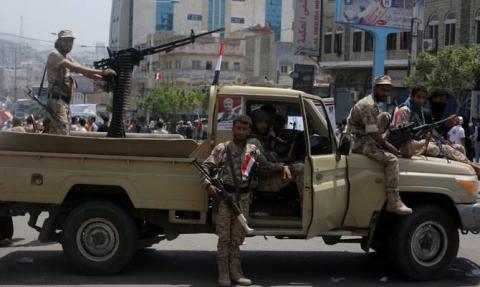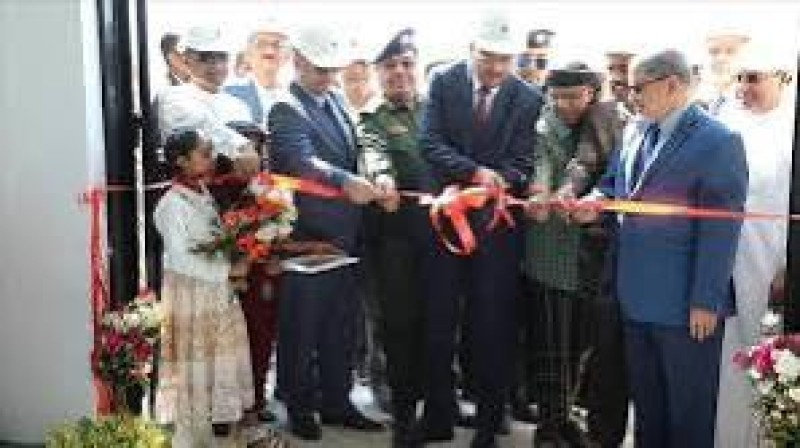Yemen: Plight of population is growing as world attention wanes


Continuously raging violence in Taiz, Marib, Al-Bayda, Hodeida, Shabwah, Al-Jawf and Hajjah has forced over 157,500 people into displacement in 2021 only, adding to the over 3.3 million people who remain displaced across Yemen. Thousands of vulnerable families in these areas, in part due to their fragile economic status, have no option but to remain there, living alongside the daily hazards of the active frontline including the alarmingly limited access to all essential needs.
People living in Taiz, Yemen’s longest-running battlefield, have been bearing the brunt of the protracted conflict since its onset back in 2015. The violence has exhausted the population that couldn’t flee. “There is always the sound of clashes, bombardments, explosions in the background. The walls of the house are frequently shelled,” said Majida, a 40-year-old widow and mother of three living in the northern part of Taiz city. “We cannot afford to leave the area and rent somewhere safer. I have no option but to stay and live in a constant state of fear for my children’s safety,’’ she added.
In a country where food insecurity is already threatening over 16.2 million people, the severity of food and water needs is dangerously acute in Taiz and other nearby areas highly impacted by ongoing violence. The escalation of conflict in Ukraine is likely to further reduce people’s access to their basic needs as it is likely to raise food prices, in particular the cost of grains, even as fuel prices rise around the world. Over the past year food prices have skyrocketed across Yemen, leaving more than half of the country in need of food assistance.
The access to other essential needs such as basic health care is dangerously limited in these areas. Access to health facilities has become a luxury. “My daughters critically need a periodic medical follow up. To take them to the nearest hospital requires paying extra for transportation as drivers are not willing to come to our neighborhood for safety reasons,” added Majeda. Across Yemen, 20.1 million, out of a total population of 30.5 million lack access to basic healthcare. And only 51% of health facilities are in service.
The ongoing clashes and shelling on the neighborhoods situated on the frontlines in Taiz have resulted in widespread mental health issues among residents, especially children. “When shells fall on our neighborhood, our children cling desperately onto our clothes and scream. Many people have lost their minds after seven years of living in areas where clashes and shelling have become part of our everyday day life,” said Om Saeed. She added: “Our highest hope is to get a bag of flour and a blanket.’’
The presence of landmines and unexploded ordnance (UXO) presents a significant danger to the people across Yemen, but contamination is especially high along Yemen’s west coast, near the strategic port of Hodeida, in Taiz governorate and more recently around Marib. Reportedly, there are more than 1 million land mines and unexploded ordnance scattered across the country, killing and injuring civilians on a daily basis.
Humanitarian needs in the country remain massive, as two-thirds of the population are currently in need of humanitarian assistance “The severity of needs is deepening by the minute. Today 14.3 million people are in acute need, which is 27% higher than last year,” said Katharina Ritz, ICRC’s head of delegation in Yemen.
The stakes are high as Yemen international pledging conference approaches, and the ICRC urges the international community to step up the response.
In 2021, the High-Level Pledging Event on Yemen announced a target of approximately $1.7 billion. That was less than the total received for the humanitarian response plan in 2020, and a billion dollars less than what was pledged at the conference held in 2019. The ICRC urges the international community to continue funding humanitarian actors like the ICRC so that people in Yemen can be better assisted in such fields as food, health care, clean water and protection.
“As the humanitarian situation worsens, scaling back assistance will be a vital matter for millions of families across Yemen. A further decrease in funding will have a direct impact on people’s lives and our ability to sustainably provide life-saving aid to them,”said Ms. Ritz.
For more information, please contact:
Basheer Omar (Sanaa) balselwi@icrc.org +967 737889476 and/or +967 771 480 412
Imene Trabelsi (Beirut) itrabelsi@icrc.org +961 3 138 353
Jason Straziuso (Geneva) jstraziuso@icrc.org +41227302077
Notes for editors:
ICRC in Yemen: Facts and Figures:
Food Insecurity in Yemen:
ICRC Response on Yemen’s West Coast:

Aden -- Yemen Airways has announced the cancellation of the mandatory round-trip ticket requirement for passengers traveling from Yemen to Saudi Ar…

Aden — Ports under the authority of Yemen’s internationally recognized government have received more than two million metric tons of fu…

Mukalla — Local authorities in Hadramout have announced the inauguration of Yemen’s first solar-powered cement station, a landmark proj…